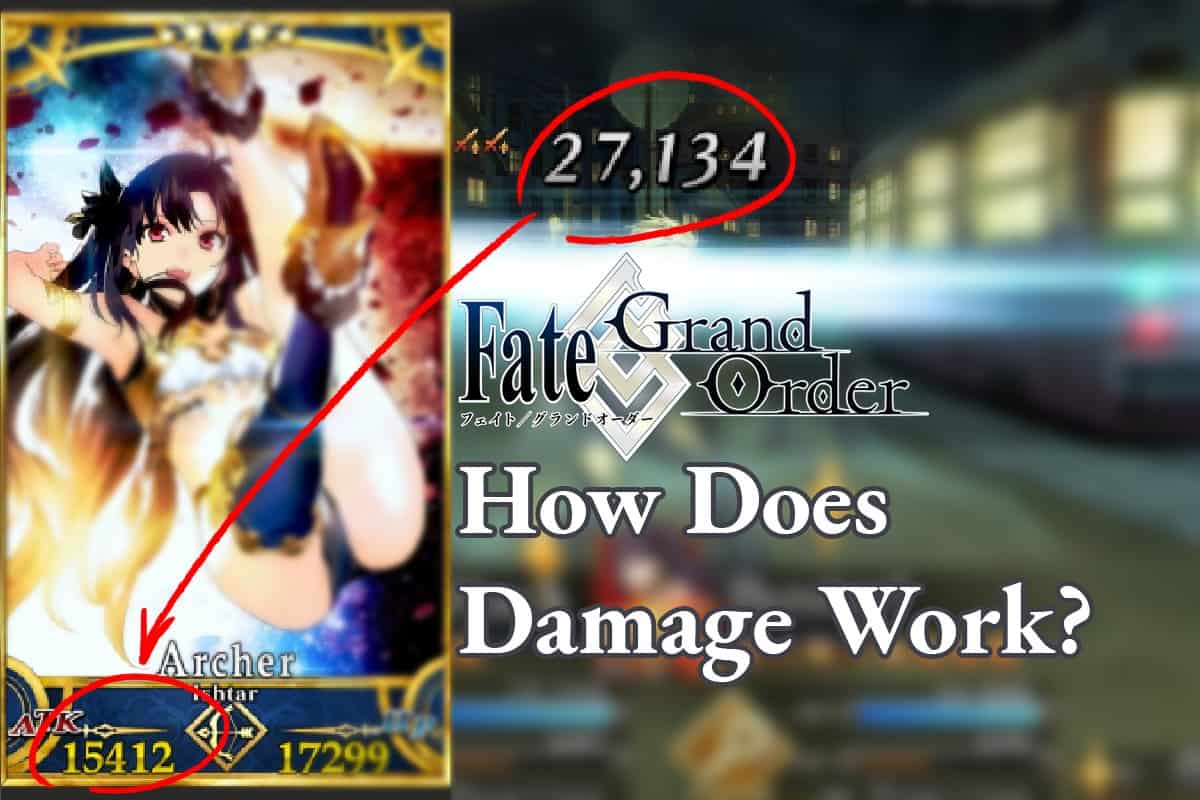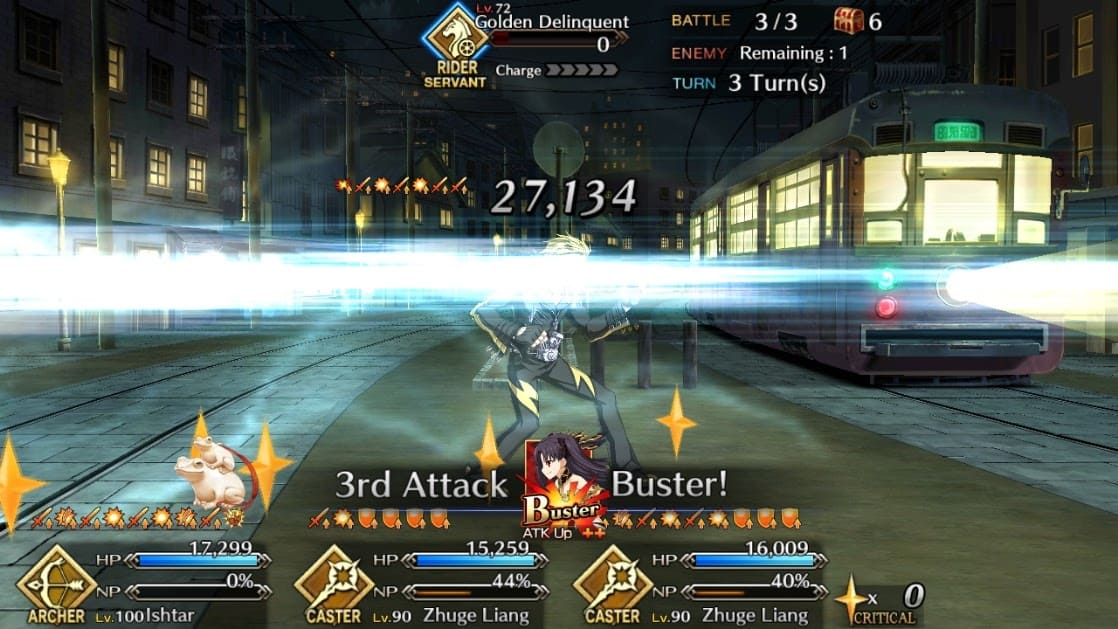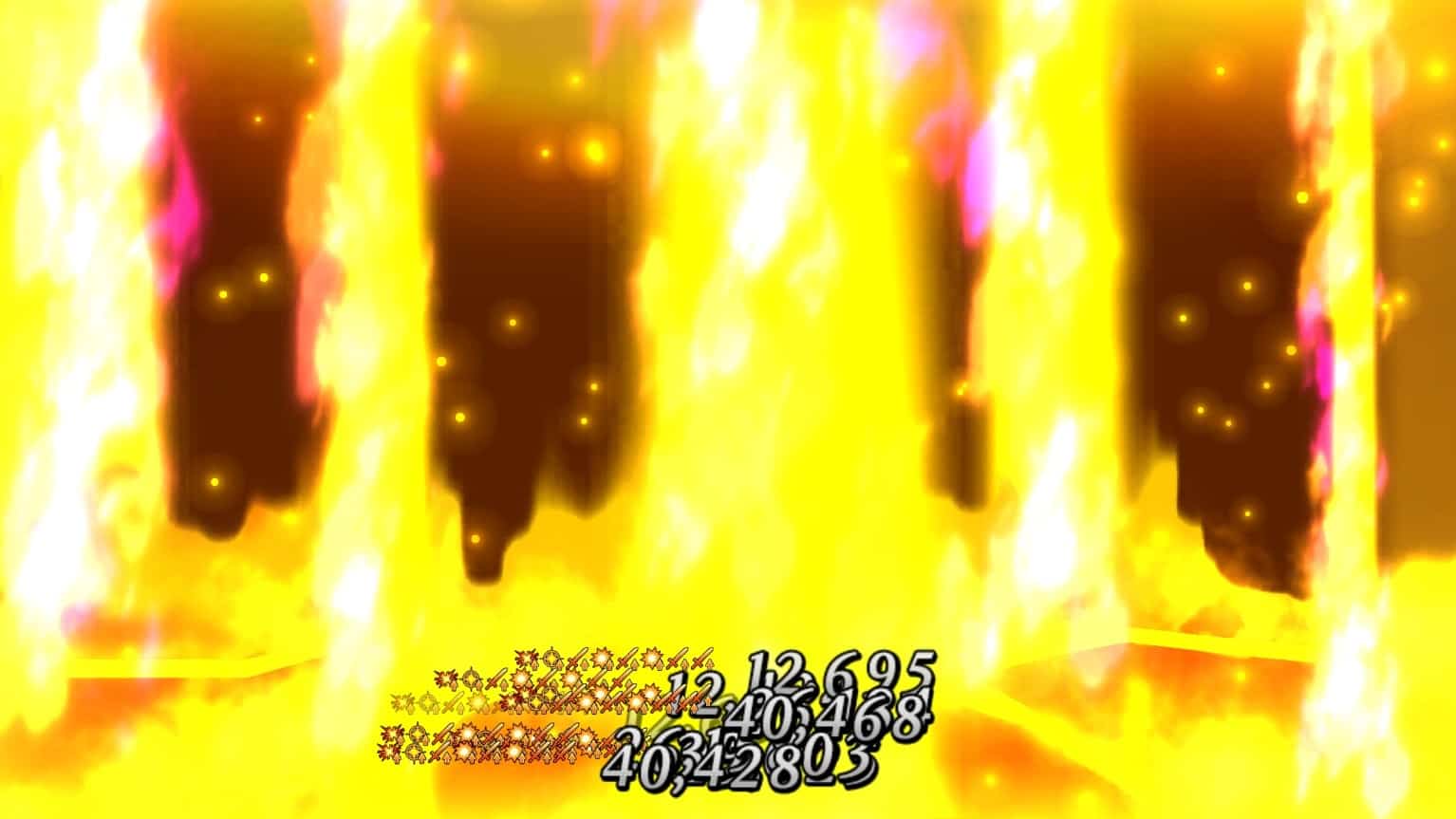
Players often wonder about the interplay of buffs in GO, or why characters with similar stats in similar situations can deal significantly different damage. Often, this comes from not understanding the damage formula or forgetting particular variables are part of it. The game even obfuscates certain parts of the calculation while leaving others clear. This only makes the problem worse.
In general, damage in GO is pretty complex and subject to some unavoidable math. As a rule of thumb, if you prioritize buffs you don’t already have a source of, you’ll do more damage.
Fate/Grand Order Damage Formula
Remember that unavoidable math? It’s best to cover it right at the outset and then break it down for you into smaller pieces. Not all of this is likely to make sense on first glance, don’t worry, it becomes a lot simpler when you break it down into bite-size chunks.

Some things in here aren’t worth talking about on their own, like the constant .23, which is the reason your servants do less than their attack in damage when unbuffed, or the buster chain benefit, which is merely 20% of the servant’s attack without being buffed. Similarly, the randomizer is just a random value from 90% to 110% that is rolled to remove perfect consistency. We’ll generally leave those be as they are more or less constant or outside the player’s capability to optimize during gameplay. The divinity buff will be omitted because only one source has a value for it that is even slightly meaningful; second place only adds 500.
Baseline Damage
Before we cover how skills affect damage, it’s important to understand why characters can have very different damage even when their attack stat is similar. The most common variable here is Class Advantage, which is very simple, but doesn’t tell the whole story. The game teaches you in the tutorial that each class has an affinity that makes it deal double damage to another class which deals half damage in return. This creates the basic Class Advantage triangles you can find in-game. The only thing that you might not be aware of here is that Berserkers and Alter-Egos deal only 1.5 times as much damage when they have Class Advantage.
However, that’s not the whole story. If Berserkers have a lower Class Advantage, why do they seem to outpace Casters, for instance? This is where a few more of the above variables come in; each class has a base multiplier applied to all of their damage, and the attribute of a character introduces another advantage triangle that is less clear.
To elaborate the earlier example, Casters have a classBase of 0.9, where Berserkers have 1.1. The attribute advantage triangle can then kick in, and if your Caster is bad into their target’s attribute where the Berserker is good, that’s another 0.9 and 1.1 difference on attributeAdvantage. If we assume everything else is equal, that means our hypothetical Caster is getting 1.62 as a damage multiplier and the Berserker 1.815. See the table below for the full values.
Class Base Multipliers
| Class | Multiplier |
| Saber | 1.0 |
| Archer | .95 |
| Lancer | 1.05 |
| Rider | 1.0 |
| Assassin | .9 |
| Caster | .9 |
| Berserker | 1.1 |
| Ruler | 1.1 |
| Avenger | 1.1 |
| Moon Cancer | 1.0 |
| Alter-Ego | 1.0 |
| Foreigner | 1.0 |
Attributes
Attacker | Defender | ||||
| Man | Earth | Sky | Star | Beast | |
| Man | 1.0 | .9 | 1.1 | 1.0 | 1.0 |
| Earth | 1.1 | 1.0 | .9 | 1.0 | 1.0 |
| Sky | .9 | 1.1 | 1.0 | 1.0 | 1.0 |
| Star | 1.0 | 1.0 | 1.0 | 1.0 | 1.1 |
| Beast | 1.0 | 1.0 | 1.0 | 1.1 | 1.0 |
Standard (Face) Cards and Buff Stacking
Now that you have an understanding of the baseline effects underneath your damage we can discuss normal cards. This is where people get tripped up the most in things that seem simple on the surface. It’s where we really start to dig into the way buffs stack. The reason some characters do so much more damage than others despite similar numbers is usually because they have a more synergistic kit.
Multi-buff Craft Essences can be a good example of how this can start to affect you. Take for example two fairly common target CEs, Limited/Zero Over and Victor of the Moon. On the surface, they should have fairly similar damage increase. L/ZO gives 25% Buster Performance while Victor gives 10% Buster Performance and 20% Crit Damage. However, if you look above, the two stats Victor uses are multiplied by one another. This creates an extra 2% advantage over L/ZO if you can manage the crits. That might seem small at first, but it stacks up.
These buff priorities will hold across when using Noble Phantasms, but they’re particularly important for normal cards for three reasons. First, the scaling modifier for later cards can start to look similar to low-level NPs. Second, the Buster First Card bonus adds 50% to the base modifiers of normal cards, but not to Noble Phantasm. Finally, critical hits double the effect of a normal card. When all is said and done, crits can easily dwarf AoE NP damage. When optimized, critting normal cards can even beat out single-target NPs because crit buffs are in so much greater supply than NP buffs.
Card Positions
| Quick | Arts | Buster | Extra | |
| Position 1 | 80% | 100% | 150% | Brave: 300% Type Brave: 450% |
| Position 2 | 96% | 120% | 180% | |
| Position 3 | 112% | 140% | 210% |
Think of each card’s damage as including your baseline multiplier and , and every buff on the servant in three categories. Within a category you add buffs of the same type, and debuffs of the opposite type (i.e. Attack Up and Defense Down). You then multiply the baseline by each category in sequence to get your final multiplier and take that times your servant’s attack and you have your pre-randomization, or average, damage.
The categories are:
- Attack Buffs, which includes Attack up/down and Defense up/down.
- Card Performance Buffs, which includes Arts, Buster, and Quick up, and their associated resistances.
- Situational Buffs, which includes Event Damage, Niche Damage (i.e. Raikou’s Mystic Slayer), NP Damage and Crit Damage. Essentially, anything that won’t always apply.
Noble Phantasms
Finally, it’s time to talk about Noble Phantasms and just what’s going on in that image. Thankfully, the formula is a lot simpler by now that we’ve cleared up the other considerations. It looks a little more like this:

As you can see, it scales the same way the previous example did, with your card type performance buffs, attack buffs, and NP damage buffs stacking multiplicatively. The big force multiplier here is the NP Multiplier. Every damaging NP has an internal multiplier, and those are then multiplied by the position 1 modifier for that card type. This means that 300% for a Buster NP is actually 450%.
Most NPs share their multiplier with others of the same card and target type, but exceptions exist. Arash uses the Single Target multipliers despite being AoE as an example. This can get further gummed up when characters get Strengthenings or Interludes that improve their NP. When in doubt, check your multipliers; our Servant Reviews always feature them.
If an NP is buffed, its NP1 multiplier becomes its previous NP2. Every other multiplier is then adjusted upwards by that much. In almost all cases it’s not particularly worth chasing NP upgrades on hard-to-get cards. They don’t offer a huge upgrade, and if the servant’s NP gets buffed, these benefits are diluted further. Usually leveling your skills will result in a greater increase in both NP and overall damage.


